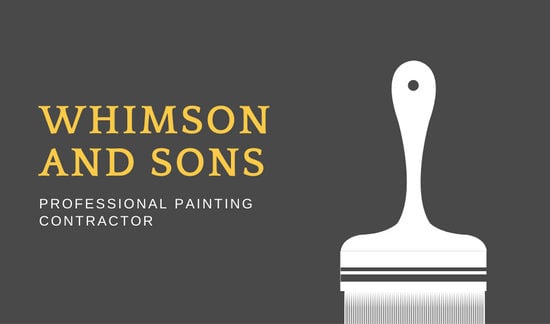Examine The Role Of Seasonal Factors In The Success Of Commercial Outside Painting And Discover The Best Times To Secure Lasting Outcomes For Your Project
Examine The Role Of Seasonal Factors In The Success Of Commercial Outside Painting And Discover The Best Times To Secure Lasting Outcomes For Your Project
Blog Article
Material By-Carlson Bagger
When you're planning a commercial exterior paint job, seasonal elements can make or break your results. You'll wish to take into consideration just how temperature and moisture impact paint application and drying out times. Picking the appropriate season can guarantee your paint sticks correctly and lasts longer. Yet which periods are really the best for this sort of job? Allow's discover the crucial elements that can affect your project's success.
The Effect of Temperature Level on Paint Application
When you're preparing a commercial outside paint job, the temperature can considerably influence how well the paint adheres and dries out.
Preferably, you want to paint when temperature levels range in between 50 ° F and 85 ° F. If house painters hobart 's also cool, the paint might not cure correctly, leading to problems like peeling or breaking.
On the other side, if it's as well hot, the paint can dry out as well swiftly, preventing proper attachment and leading to an irregular finish.
You must likewise think about the time of day; early morning or late afternoon uses cooler temperatures, which can be much more beneficial.
Always examine the supplier's suggestions for the particular paint you're using, as they frequently give support on the optimal temperature range for optimal outcomes.
Humidity and Its Impact on Drying Times
Temperature level isn't the only ecological aspect that influences your industrial external painting job; humidity plays a considerable function too. High humidity levels can reduce drying times considerably, impacting the total top quality of your paint job.
When the air is saturated with moisture, the paint takes longer to heal, which can bring about problems like bad attachment and a higher threat of mold development. If you're repainting on a specifically humid day, be planned for extensive wait times in between layers.
It's crucial to keep an eye on regional climate condition and strategy as necessary. Ideally, simply click the next web page for moisture levels in between 40% and 70% for optimum drying.
Maintaining these consider mind guarantees your job remains on track and provides a long lasting surface.
Best Seasons for Commercial Exterior Paint Projects
What's the best season for your business exterior paint projects?
Spring and very early autumn are commonly your best options. During these periods, temperatures are light, and moisture degrees are typically lower, creating excellent conditions for paint application and drying.
Stay clear of summer season's intense heat, which can trigger paint to dry too swiftly, resulting in bad attachment and finish. Similarly, winter months's cold temperature levels can impede appropriate drying out and healing, running the risk of the durability of your paint job.
Aim for days with temperature levels between 50 ° F and 85 ° F for ideal results. Remember to inspect the local weather report for rain, as damp problems can wreck your project.
Planning around these variables guarantees your painting project runs efficiently and lasts much longer.
Verdict
To conclude, planning your business outside paint tasks around seasonal factors to consider can make a significant distinction in the outcome. By organizing best exterior painters during the excellent temperature levels and humidity levels, you'll make sure better bond and drying out times. Keep in mind to keep an eye on regional weather report and pick the correct time of year-- springtime and early fall are your best bets. Taking these steps will certainly aid you achieve a long lasting and specialist finish that lasts.
